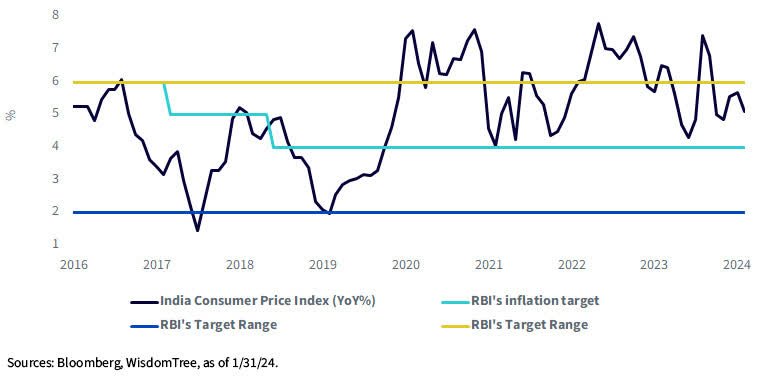Unraveling the Mystery of America’s Economic Strength
March 23, 2024 | by stockcoin.net

“Unraveling the Mystery of America’s Economic Strength” examines the paradoxical resilience of the American economy in the face of rising interest rates. Despite conventional wisdom suggesting that higher interest rates should have a visible impact on the economy, the anticipated economic apocalypse has not materialized. Dario Perkins, a strategist, questions why the economy remains untouched by the equivalent of a high cholesterol warning. The article explores theories surrounding the impact of monetary policy and highlights the shifting behavior of Americans when it comes to spending and saving. It delves into the Federal Reserve’s strategy and the two main paths through which it influences consumer behavior. The article concludes with a sense of ambiguity, leaving the reader questioning the true nature of America’s economic strength.
The Mystery of America’s Economic Strength
A Dance with Dollars
In the world of economics, America’s economic strength often appears as an enigma. Despite factors such as high interest rates, the economy seems to remain intact, defying the logic of expected impacts. The resilience and stability of the American economy have left experts and analysts scratching their heads, desperately searching for answers.
Curiosity About the Economy
Dario Perkins, a renowned strategist, is one of those seeking to unravel the mystery of America’s economic strength. He questions why the anticipated economic apocalypse, brought on by rising interest rates, has not materialized. Back in 2022, when central banks decided to increase rates, the anxiety surrounding the potential consequences was palpable. However, to the surprise of many, the economy remains unscathed.
The Federal Reserve’s Influence
One possible explanation for this phenomenon lies in the actions of the Federal Reserve. It is possible that the central bank has employed strategies that have staved off the negative impacts of rising interest rates. Perhaps the initial fears were exaggerated, and America’s economic system is more resilient than previously believed.
The Federal Reserve has long asserted that the impacts of interest rate adjustments take time, citing “long and variable lags.” This delayed reaction may be akin to waiting for the effects of morning coffee to kick in. Perkins, however, remains skeptical, directing attention towards the “monetary transmission mechanism” for further exploration.
Delayed Reaction and Monetary Transmission Mechanism
The monetary transmission mechanism is a complex web of interactions and effects through which changes in monetary policy, such as interest rate adjustments, influence the broader economy. Some theories have emerged challenging the traditional view that high interest rates would make borrowing for significant investments, such as homes or cars, less appealing.
However, evidence suggests that Americans are, in fact, adjusting their behavior in response to interest rates. The allure of higher returns on cash savings has led to a shift in spending and saving habits. Financing large purchases has become increasingly challenging, while money-market funds have become more attractive.
Impact of High Interest Rates on Borrowing and Spending
The impact of high interest rates on borrowing and spending is a crucial aspect to consider when examining America’s economic strength. Common wisdom would suggest that higher rates should dissuade borrowing and reduce spending, ultimately slowing down economic growth. However, this is not the case.
Government policies and the cushion provided by pandemic-related fiscal measures have played a significant role in mitigating the negative effects of high interest rates. Despite the headwinds, household incomes have remained resilient. Strategic rate-locking by businesses and consumers during periods of low interest rates, combined with government intervention, have contributed to this stability.
The Twisted Paths of Money Flow
To better comprehend the intricate workings of the American economy, it is essential to explore the two main paths through which the Federal Reserve’s actions impact the flow of money. These paths, known as the “intertemporal substitution” channel and the “income effects” channel, shed light on the interplay between saving, spending, and economic growth.
The intertemporal substitution channel refers to the influence on decisions regarding saving or splurging. With current interest rates, financing significant purchases has become increasingly difficult, leading to a shift in consumer behavior. On the other hand, the allure of higher returns on cash savings has incentivized individuals to flock to money-market funds.
The income effects channel, on the other hand, focuses on the redistribution of wealth between lenders and borrowers. Higher interest rates theoretically favor lenders, reducing spending and slowing growth. However, the impact of government policies and the pandemic cushion have counteracted these effects, enabling household incomes to withstand the challenges.
Shift in Saving and Spending Habits
The shift in saving and spending habits is a clear reflection of the impact of high interest rates. Americans have adjusted their behavior, aligning with the siren song of interest rates. This shift is evident in the financing difficulty faced by individuals looking to make significant purchases and the increased attraction to money-market funds.
Government Policies and Pandemic Impact
Government policies have been instrumental in mitigating the negative effects of high interest rates and promoting economic stability. The proactive measures implemented during the pandemic, coupled with strategic rate-locking by businesses and consumers, have helped safeguard household incomes and sustain economic activity.
Resilience of Household Incomes
Despite the challenges posed by high interest rates, household incomes have maintained their resilience. The persistence of household incomes can be attributed to a combination of strategic rate-locking during periods of lower interest rates and government interventions aimed at supporting the economy. These factors have played a crucial role in preventing widespread economic downturn.
Remaining Mysteries and Uncertainties
While much progress has been made in understanding the mystery of America’s economic strength, there still remain mysteries and uncertainties. The interplay of various factors, including government policies, monetary transmission mechanisms, and consumer behavior, continues to confound analysts and economists.
As the economic landscape evolves and new challenges arise, the quest to unravel the secrets behind America’s economic strength will persist. Only through ongoing analysis and research can a clearer picture emerge, shedding light on the intricacies of the economy and guiding policymakers and businesses towards informed decision-making.

RELATED POSTS
View all





